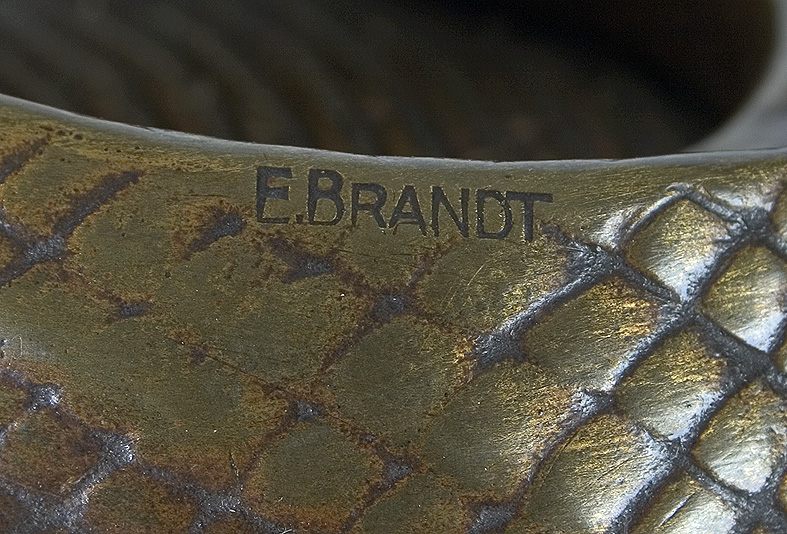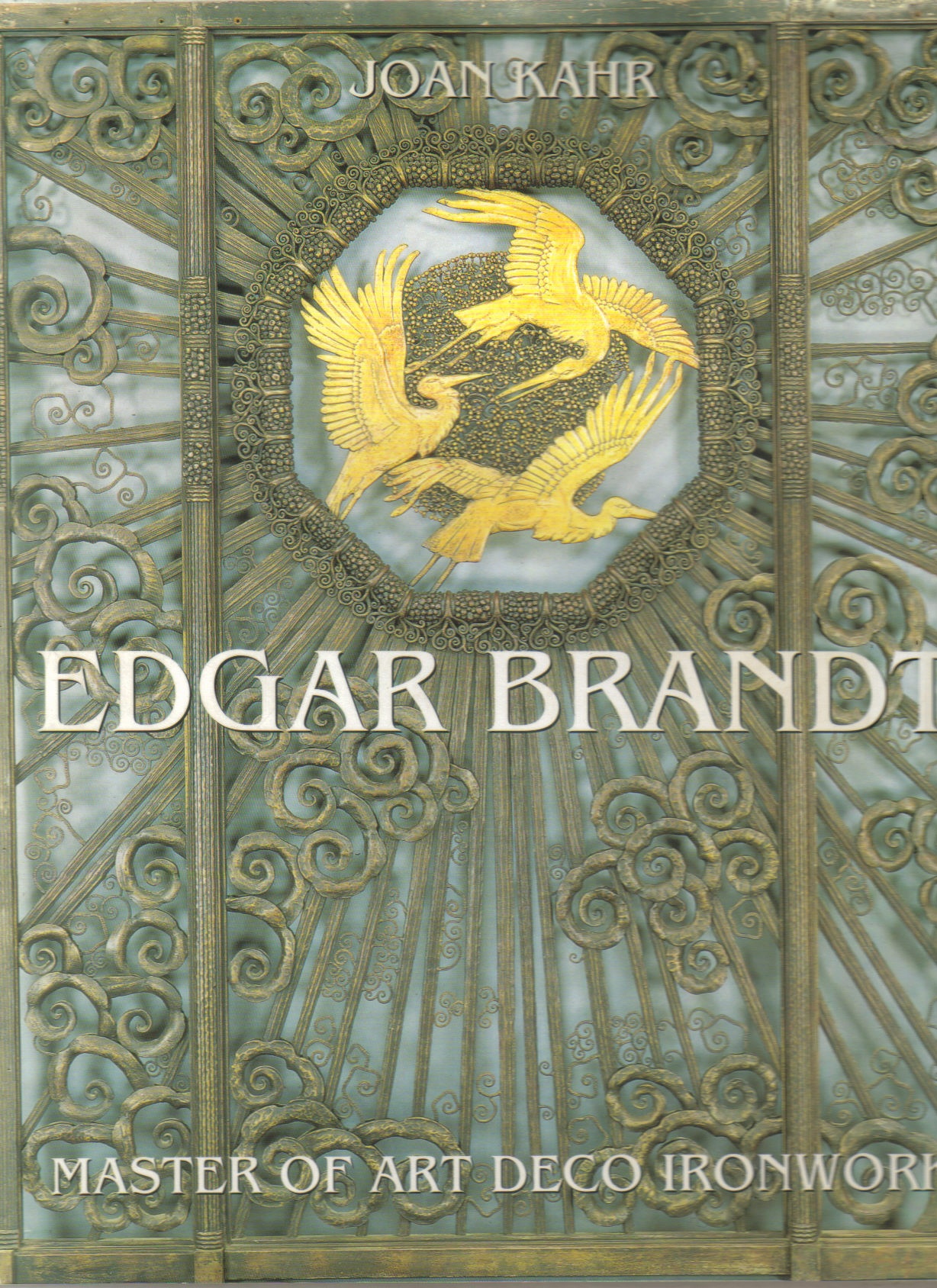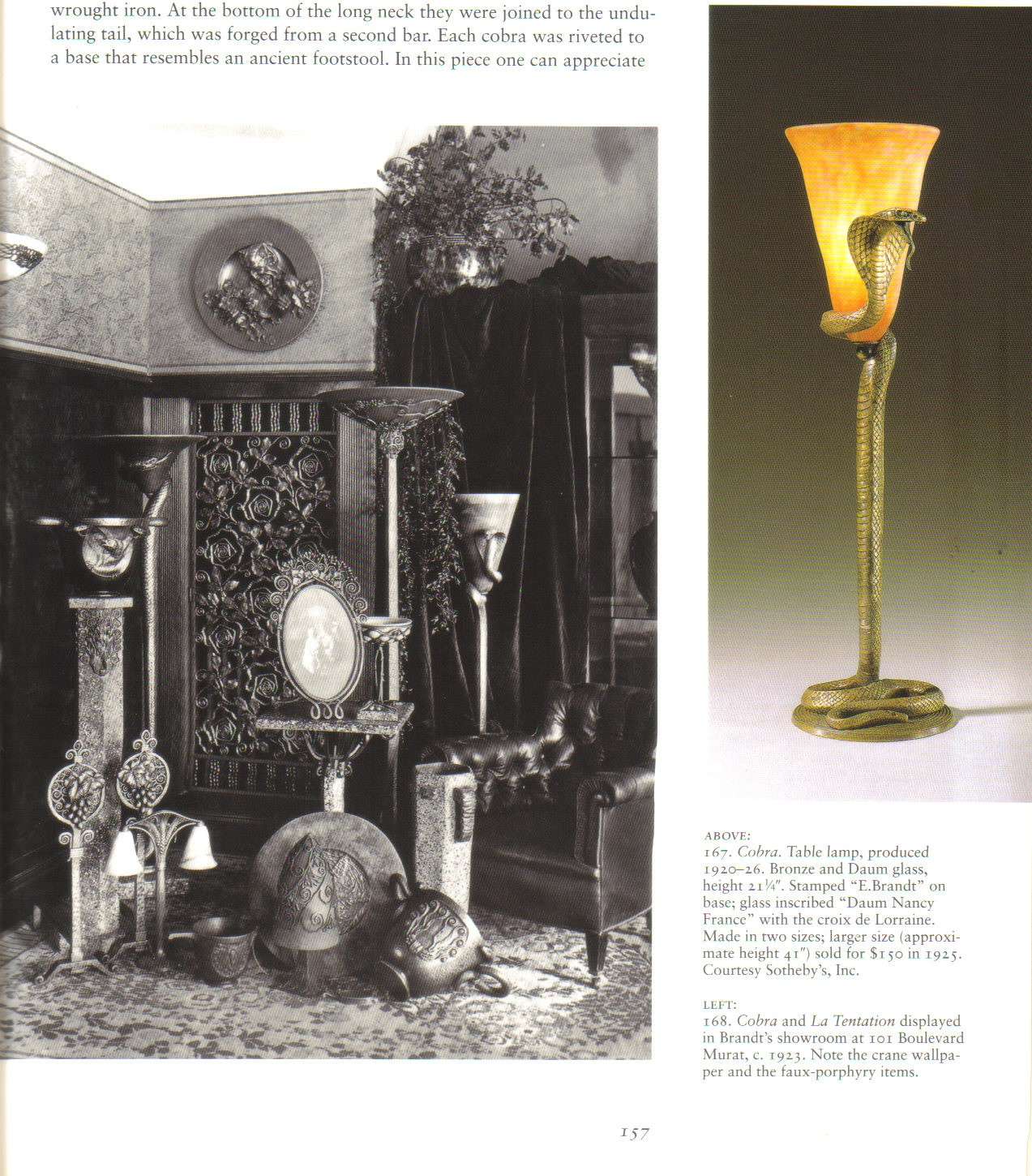40 ½ in (103 cm) high
cf. Joan Kahr, Edgar Brandt: Master of Art Deco Ironwork, 1999, p.157
Visual representations of snakes go back to the Palaeolithic period. Worship of the snake was prevalent in many ancient cultures, including those of Egypt and Greece, where snakes had religious meaning. Egyptian pharaohs wore the uraeus, the figure of the sacred asp or cobra, on their crowns, and uraei were depicted in temples and tombs to ward off enemies. For the decorative artist, the snake is an evocative motif that is also malleable and can be twisted into handles or lengthened for lamps or vases. The cobra with its dilated throat, so often seen in Egyptian works, suggested to Brandt and his designers not only an appropriate shape for a lamp but also a dramatic form for expression in iron or bronze.
The snake motif had enjoyed popularity in French decorative arts since the 19th century and became ubiquitous in the 1920s. Artists such as Lucien Falize and René Lalique fashioned jewellery with snakes’ heads and bodies during the Art Nouveau movement. Jean Dunand exhibited copper vases flanked by cobras and individual bronze sculptures of snakes in 1913 and 1919. Brandt would have been stimulated by these works to produce his own decorative variation of the snake form.


















